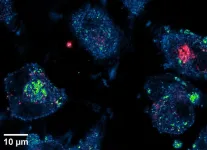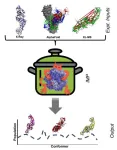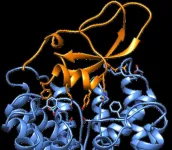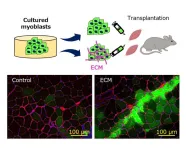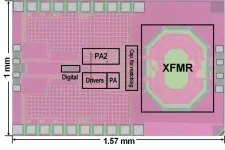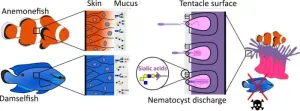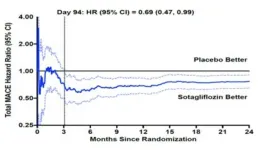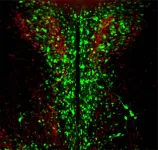(Press-News.org) ROCKVILLE, MD – Brain inflammation, while a crucial part of the body's immune response, takes on a detrimental role in Alzheimer's disease. Unlike the acute, short-lived inflammation that combats infection, the inflammation associated with Alzheimer's becomes chronic and persistent. Scientists have been trying to understand why this happens.
New research reveals key differences in how the brain's immune system responds to the disease compared to a bacterial infection. The work will be presented at the 69th Biophysical Society Annual Meeting, to be held February 15 - 19, 2025 in Los Angeles.
The study focuses on how immune cells react to amyloid-beta (Aβ) plaques, a hallmark of Alzheimer's, and how this immune response differs from the reaction to bacterial toxins. “Bacteria cannot enter our brain because of the blood brain barrier,” said Arpan Dey, PhD, a postdoctoral associate in the lab of Professor David Klenerman at the University of Cambridge in the United Kingdom. “But small proteins could be acting like bacteria in our brain and giving rise to neuroinflammation, which could be contributing to dementia,” he added.
Dey and colleagues used a model system of immune cells and exposed the cells to Aβ aggregates or lipopolysaccharide (LPS), a component of bacterial cell walls that triggers a strong immune response. They focused on the formation of structures called myddosomes, which are crucial for initiating inflammation.
The team discovered that larger Aβ clumps trigger more myddosome formation in immune cells. Smaller Aβ clumps, even after longer exposure, failed to trigger this response. This suggests that the size of the Aβ clump is critical for activating the immune system in Alzheimer's.
In contrast, LPS triggered a much faster and stronger myddosome response than even the large Aβ aggregates. This difference in timing and intensity may explain why inflammation in Alzheimer's is chronic and drawn-out, whereas the response to a bacterial infection is typically more acute and resolves more quickly.
“Our findings reveal a crucial distinction in how the brain's immune system reacts to a bacterial infection versus Aβ clumps,” said Dey. “The slower, more sustained immune activation by large Aβ aggregates may contribute to the chronic inflammation seen in Alzheimer's disease.”
The team’s next step is to start looking at markers of myddosomes in blood samples from people with dementia and brain samples from the UK Brain Bank.
By understanding the mechanisms driving inflammation in Alzheimer's, they hope to contribute to the development of new therapies that can specifically target the chronic inflammation associated with the disease, potentially slowing its progression.
“This work opens up new avenues for drug discovery,” Dey said, he added, “by understanding and targeting the pathways involved in the inflammatory response, we may be able to develop treatments for Alzheimer's and other neurodegenerative diseases.”
Image Caption:
Myddosome formation (shown in yellow-green) is triggered by Aβ aggregates (shown in red) in macrophages. Image courtesy of Arpan Dey.
###
The Biophysical Society, founded in 1958, is a professional, scientific Society established to lead development and dissemination of knowledge in biophysics. The Society promotes growth in this expanding field through its annual meeting, publications, and committee and outreach activities. Its 7,000 members are located throughout the United States and the world, where they teach and conduct research in colleges, universities, laboratories, government agencies, and industry.
END
ROCKVILLE, MD – In a surprising discovery, scientists have found that the heart possesses "sweet taste" receptors, similar to those on our tongues, and that stimulating these receptors with sweet substances can modulate the heartbeat. This research opens new avenues for understanding heart function and potentially for developing novel treatments for heart failure.
While taste receptors are traditionally associated with the tongue and our ability to perceive flavors, recent studies ...
ROCKVILLE, MD – Viruses, like those that cause COVID-19 or HIV, are formidable opponents once they invade our bodies. Antiviral treatments strive to block a virus or halt its replication. However, viruses are dynamic—constantly evolving and changing shape, which can make designing antiviral treatments a challenge.
But new research utilizes an innovative computational modeling approach to capture the complex and diverse shapes that viral proteins can adopt. The work will be presented at the 69th Biophysical Society Annual Meeting, to be held February 15 - 19, 2025 in Los Angeles.
This new approach, implemented in the open-source Integrative Modeling Platform ...
ROCKVILLE, MD – When scientists develop new molecules—whether for the purposes of agriculture, species control, or life-savings drugs—it’s important to know exactly what its targets are. Thoroughly understanding a molecule's interactions, both intended and unintended, is crucial for ensuring its safety and efficacy.
A cone snail toxin known to affect both insects and fish inspired Weizmann Institute scientists to develop a new way of finding molecular targets. By combining artificial intelligence with traditional ...
Tokyo, Japan – Researchers from Tokyo Metropolitan University have developed a way to treat ageing-related muscular atrophy using regenerative medicine. Conventional methods to implant myoblasts, precursors to muscle fiber, required prior scarring for the new cells to graft properly. By adding extracellular matrix (ECM) fluid into the implant, the team successfully grafted myoblasts onto healthy muscle in mice. Their technique opens the way for using implantation to treat unscarred muscle atrophied by ageing.
Age-related muscular atrophy in skeletal muscle can have a devastating impact on people’s quality ...
Three innovative design techniques substantially enhance wireless transmitter performance and can boost power efficiency and elevate data rates concurrently, as reported by the researchers from Science Tokyo, Japan. This effectively aligns with the growing demand for speed and efficiency, accelerating the widespread deployment of wireless devices. This enables synergistic operation of wireless electronic devices and better quality of modern life.
Background:
Integrating artificial intelligence (AI) into everyday life requires the interconnectedness of all electronic devices via a technology called the Internet of Things (IoT). The rapid expansion of the IoT market has ...
The clownfish-anemone living arrangement is one of the most widely recognized examples of symbiosis. Researchers have made a breakthrough in understanding how anemonefish can live safely among sea anemones without being stung by their venomous tentacles, solving a century-long mystery.
Scientists at the Okinawa Institute of Science and Technology (OIST) and their international collaborators have discovered that anemonefish have evolved to maintain very low levels of sialic acid in their skin mucus to avoid triggering the release of nematocysts (stinging cells) in ...
Sotagliflozin, a drug recently approved by the Food and Drug Administration to treat type 2 diabetes and kidney disease with additional cardiovascular risk factors, can significantly reduce heart attack and stroke among these patients, according to results from an international clinical trial led by a Mount Sinai researcher.
Sotagliflozin is a sodium-glucose cotransporter (SGLT) inhibitor. It blocks the function of two proteins, known as SGLT1 and SGLT2, which move glucose and sodium across cell membranes and help control blood sugar levels. Other SGLT2 inhibitors do not as significantly block SGLT1.
The study, published ...
PROVIDENCE, R.I. [Brown University] — Scientists discovered years ago that the hypothalamus — which helps to manage body temperature, hunger, sex drive, sleep and more — includes neurons that express the protein opsin 3 (OPN3). Far less clear, however, was what this light-sensing protein does so deep inside the brain.
A study published in PNAS suggests that OPN3 plays an important role in regulating food consumption.
“Our results uncover a mechanism by which the nonvisual opsin ...
New blood test could improve Alzheimer’s Disease diagnosis, research finds
Up to half of all people living with Alzheimer’s Disease in Ireland remain undiagnosed. Now, a new blood test may have the potential to transform patient care, allowing for better diagnosis, earlier interventions and more targeted treatments.
Researchers at Trinity College Dublin, the Tallaght Institute of Memory and Cognition and St James’s Hospital, Dublin are exploring the ability of a new blood test, plasma p-tau217, to detect Alzheimer’s Disease (AD). This test could potentially replace the current diagnostic method, a lumbar puncture/spinal tap (which ...
Cal Poly Assistant Professor Joni Roberts has been chosen, with two additional university faculty members, as the first Cal Poly Faculty Excellence Award honorees.
The inaugural Faculty Excellence Award — an honor recognizing outstanding contributions in teaching, research and service — is administered by the Office of the Provost and funded by generous donor contributions. The award reflects Cal Poly’s commitment to academic excellence and its Learn by Doing philosophy.
The ...
